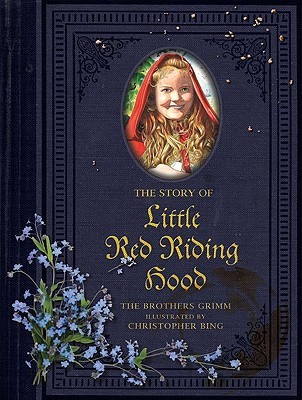The Story of Little Red Riding Hood

Author: Jacob Grimm, Wilhelm Grimm

Author: Jacob Grimm, Wilhelm Grimm
Illustrator: Christopher H. Bing
Genre: Traditional Literature
Awards: N/A
Grade level: 2-5
Genre: Traditional Literature
Awards: N/A
Grade level: 2-5
The story of Little Red Riding Hood has many different versions. The version is known as the classic tale of Little Red. Little Red Riding Hood's grandmother is sick, so Red's mother asks her to take some cake and wine to make her grandmother feel better. As soon as Red got into the woods, a wolf approached her and tricked her into telling him where the grandmother lived. He distracted her and sneaked away to the grandmother's house. Once, he got there, he came in and scarfed the grandmother down and dressed up in her clothes. Red came to the house to be eaten up as well as grandmother. Once the wolf was all full, he fell asleep in grandmother's bed and began to snore. A woodsman heard the snore and thought he should check on the grandmother, but found the wolf instead. He knew that the wolf must have eaten the grandmother, so he cut her out and found Little Red as well. Then they put stones inside of his stomach and when he woke up, he fell over and died.
The illustrations show the contrast in light and dark in the story. The images are a huge factor in the telling of this story. Each page is bordered with images of pressed flowers that look like they are protruding from the page. Christopher H. Bing uses water color, pen, and ink to create images that add beautifully to the story. In the parts that would be gory, such as when the wolf attacks, are almost hidden by the use of the red coat, curtains, and flowers that cover the page taking place of blood.
The age limit for reading this book in a classroom is difficult to say because it is more of the classic tale that was not necessarily made to fit the needs of children. This is a more gory and scary book that is not right for early aged children. I would use this book in my classroom, starting at the earliest, second grade through fifth grade. This is a favorite to many readers and could be a book that sparks a young reader. Teaching traditional tales like this one is important because it gives students insight into different culture and time periods that they do not know about.
No comments:
Post a Comment